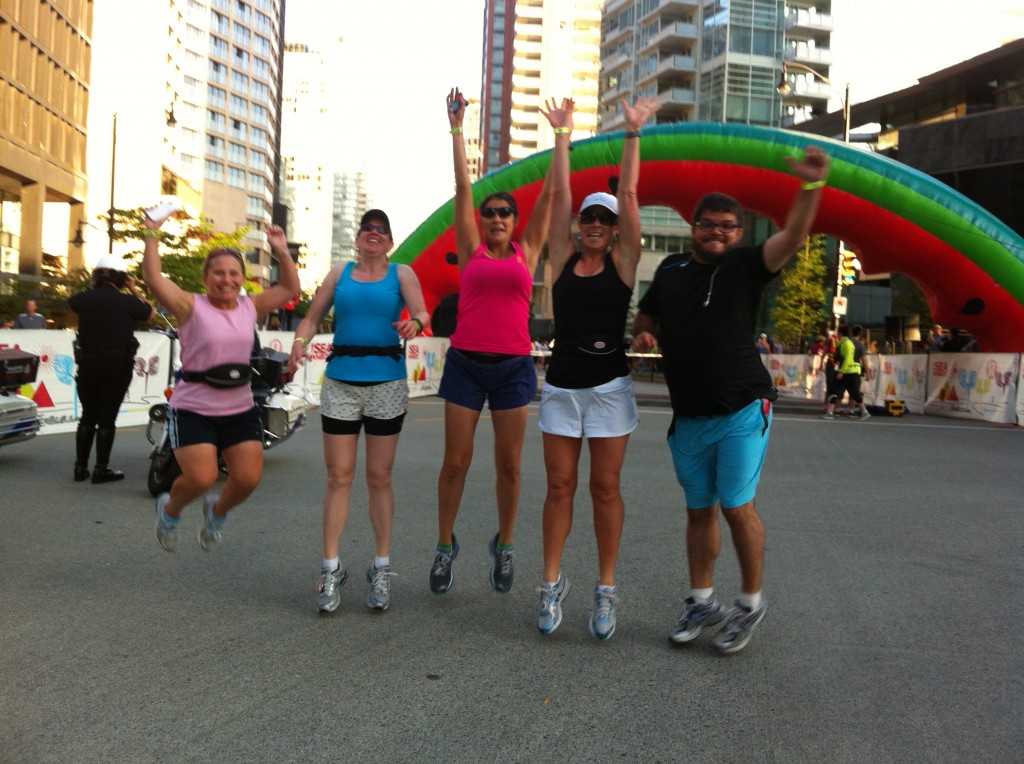 There have been a lot of chatter written recently on the lack of competitiveness in the younger generation of runners. It reached a pinnacle last week with the publishing of The Slowest Generation, an article by Kevin Helliker in the Wall Street Journal and a blog post by Toni Reavis entitled, Dumbing Down, Slowing Down. The gist of both is that younger runners are entering races with less concern about their finishing times, with the undertone that this is bad for (North) American running. I believe the article was inspired by the Competitor Groups recent announcement of cuts to their elite sponsorships.
There have been a lot of chatter written recently on the lack of competitiveness in the younger generation of runners. It reached a pinnacle last week with the publishing of The Slowest Generation, an article by Kevin Helliker in the Wall Street Journal and a blog post by Toni Reavis entitled, Dumbing Down, Slowing Down. The gist of both is that younger runners are entering races with less concern about their finishing times, with the undertone that this is bad for (North) American running. I believe the article was inspired by the Competitor Groups recent announcement of cuts to their elite sponsorships.
As one of the slower runners derided by Helliker in his article, I am offended with the idea, that he thinks my entering a race running is bad for the sport. I’m not exactly sure how opening up the sport to the masses is impacting top-level athletes as stated in his article, or leading to a culture of mediocrity as opined in Reavis’s post. If a local Colour Run is impacting the overall state of competitiveness in elite runners, than the problem is at the front of the race of the system, not in the mid pack or back.
I have found that the great thing about running for 90% of participants is that we are mainly racing against ourselves, whether it is to lose some weight, complete a bucket list item, or for a PR. Even if some other runners aren’t racing and are just there for the ‘parade,’ it has little or no effect on those who are there to compete.
I run races for different reasons, I have big “A” races where I push myself, other ‘tune up” races where I focus on various aspects (pacing, nutrition, etc) leading up to A races, others to support community events, and still others to have fun with friends. I am never going to pose a threat to the top athletes, and a 3 hour marathon is a wild dream, but training for a 4 hour marathon has helped me loose 65 pounds, meet great friends and support many local causes.
As mentioned in a comment to the WSJ article, if he current running boom, and events such as the Roll ‘n’ Roll Marathon Series, the Color Run, or Tough Mudder gets people out and active in their community. all the better. I rather see people out and actively enjoying a ‘parade’ with their fellow residents than sitting alone at home watching TV.
Rather than criticizing the masses for picking up the sport, they should be celebrating our new interest in their support and finding ways to nurture it further Just as my touch football game last weekend has no impact on the performance of the Seattle Seahawks, somebody finishing the upcoming Chicago Marathon in 5:15 has no impact on those finishing three hours earlier. But in both cases, it might make us pay more attention to what the elites are doing, tying us closer to the sport and increase the popularity of running.
Besides, it is the slower runners who are purchasing the majority of the gear from companies that sponsors the elites. We are the ones whose entry fees fund the prize pools at the bog city races. We are the ones who turned on the TV during the Olympics and recent World Champions, increasing the profile (and TV revenue) of the sport. In other words it is the so-called slowest generation who are helping to fund the elites to pursue their dreams and the world records.
And, at the end of the day, if the new crop of runners manages to inspire a daughter, or grandson, or neighbourhood kid to get into running in high school—or pursue a track scholarship in university,—who know how many new elite athletes will emerge as a result of the “slowest generation’s” embrace of running.









